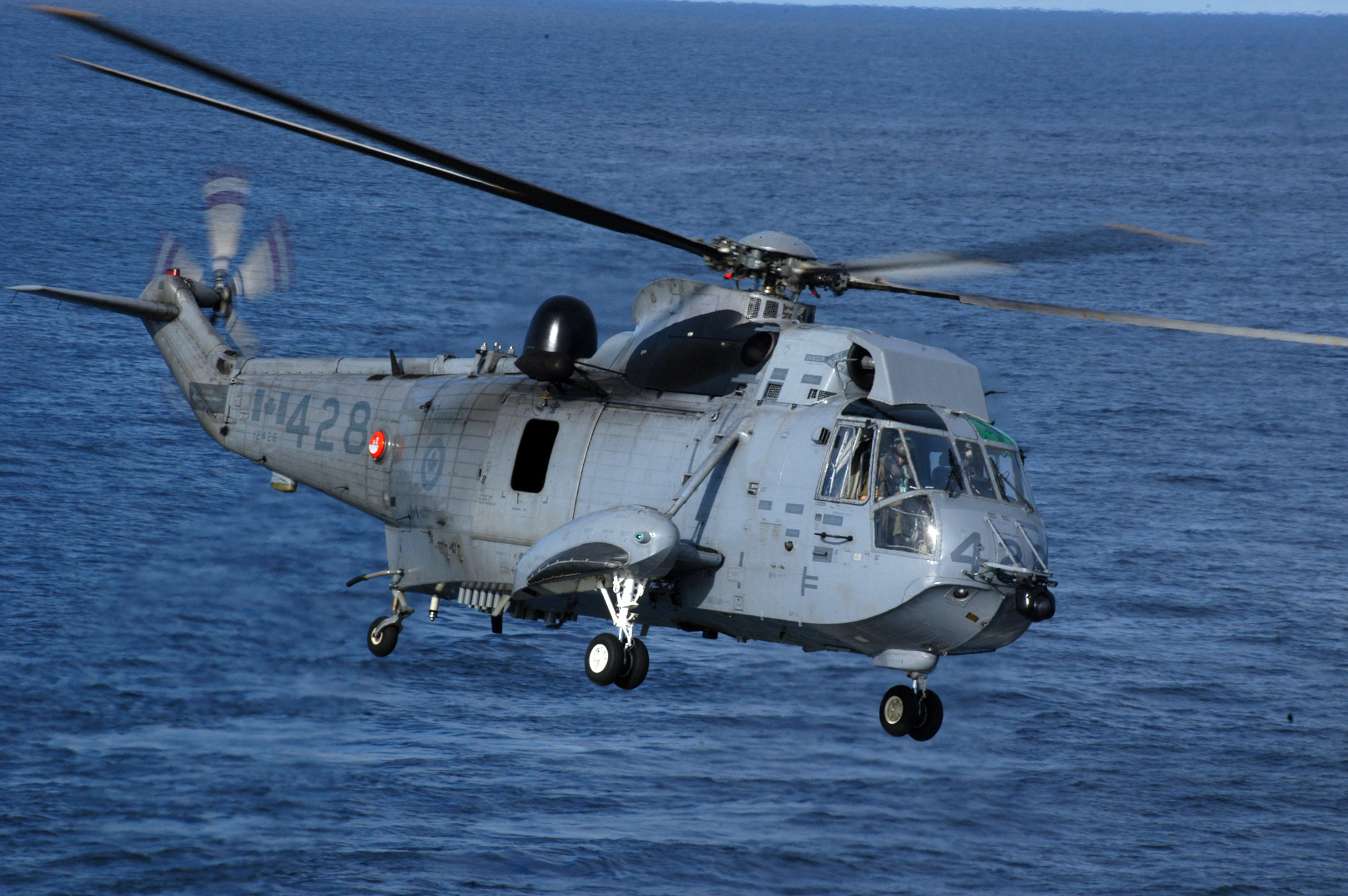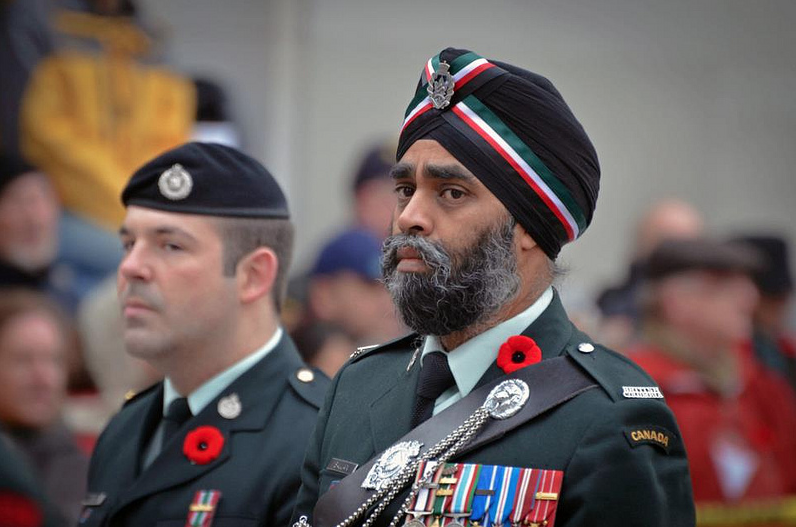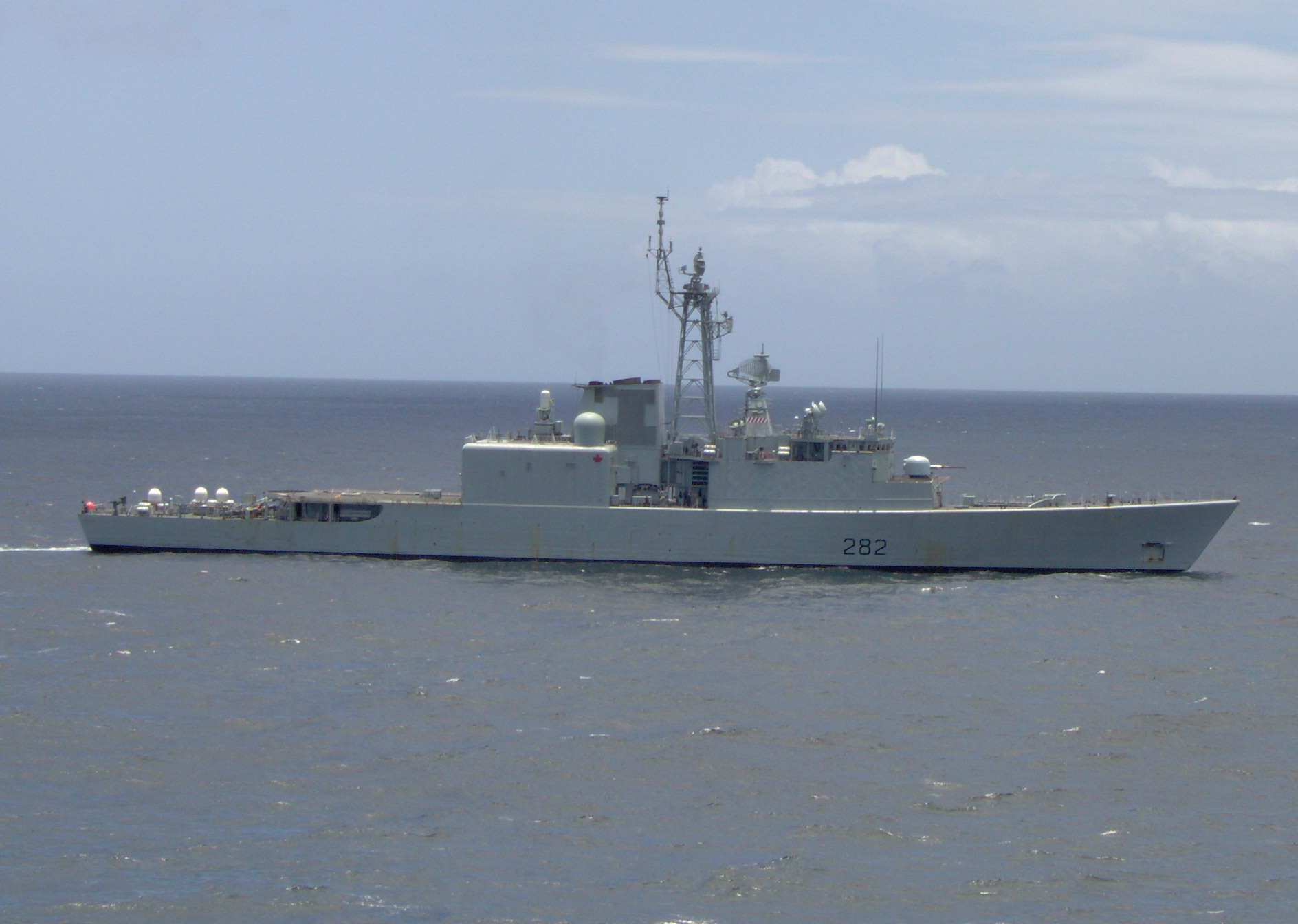As work continues to implement the National Shipbuilding Procurement Strategy, another issue relating to the modernization of the Royal Canadian Navy continues to lurk in the background. In 2004, a contract was signed by the federal government with Sikorsky Inc. to replace the aged and accident-prone CH-124 Sea King maritime helicopter, originally introduced in 1963. After a Sea King struck the tarmac with its main rotors on return from a training flight at CFB Halifax on July 15th, the entire fleet of 41 aircraft has been grounded pending an investigation into the incident. This comes on the heel of news that Sikorsky has not been able to meet the deadline to deliver the promised 28 CH-148 Cyclone helicopters intended as replacements, and may even consider cancelling the contract due to heavier than expected production costs.
[captionpix align=”left” theme=”elegant” width=”350″ imgsrc=”http://upload.wikimedia.org/wikipedia/commons/f/f2/US_Navy_120102-N-DR144-050_An_MH-60S_Knight_Hawk_assigned_to_Helicopter_Sea_Combat_Squadron_(HSC)_23_passes_the_Arleigh_Burke-class_guided-missile_.jpg” captiontext=”Sea Hawk.”]
This procurement debacle has constrained some of Canada’s naval capabilities. While anti-submarine warfare is not a pressing concern for the Royal Canadian Navy at this time, many of the 41 Sea King helicopters currently in use are intended for passenger and freight transport. Having these helicopters or their replacements in good working order would be essential to any sustained deployment by the Canadian Forces. If a serious technical issue is found with the entire fleet of Sea Kings, Canada may have to rely upon other countries to provide this transport until a months-long repair process is completed.
By way of contrast, the procurement of CH-147F Chinook helicopters for the Royal Canadian Air Force has progressed much more successfully. In June, the first of 15 helicopters was delivered by Boeing. The original plan was for 16 Chinooks with the first to be delivered in 2008; however, production delays left the Canadian Forces with little choice other than to purchase six second-hand Chinooks from the United States for use in Afghanistan. While certainly a setback, that Boeing has been able to deliver on the procurement contract is a significant step up from the current situation with Sikorsky over the Cyclone helicopters.
If Sikorsky does elect to cancel the contract with the Canadian government, the Chinook purchase should serve as a template in the scramble to find a new replacement for the Sea Kings. The CH-148 Cyclone was largely a developmental design, which meant that some time and resources had to be dedicated toward experimentation and the design of appropriate prototypes before work could begin on manufacturing the aircraft themselves. Furthermore, procurement for developmental designs is a notoriously risky proposition – the controversy surrounding the F-35 joint strike fighter is case in point. An existing design, one which has seen service with the naval and air forces of another country, may be a way to ensure successful delivery. For example, the SH-60 Sea Hawk, also produced by Sikorsky, has been in use with the United States Navy as a replacement to the Sea King, though the Sea Hawk is also advancing in age and may be too bulky for landing and take-off on some relevant Royal Canadian Navy vessels.
Whatever the fate of the Cyclone contract or the existing Sea King fleet, the procurement of new maritime helicopters will be a lingering issue in Canadian politics for at least a few more years to come.




